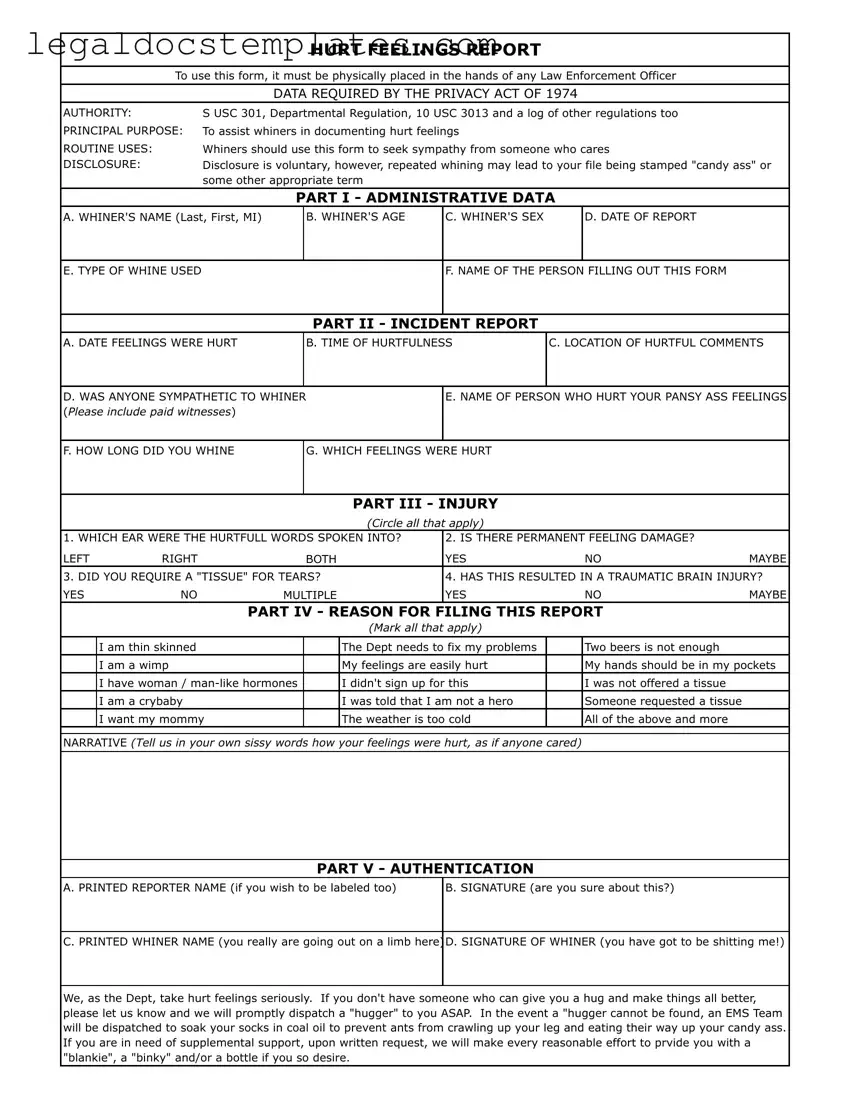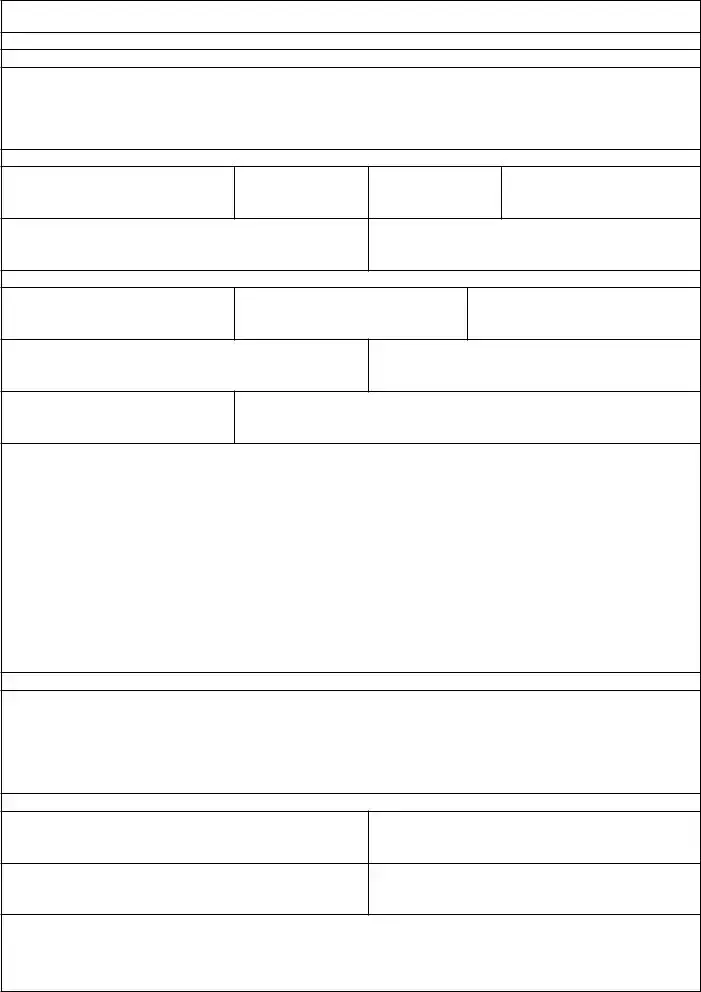The Hurt Feelings Report form shares similarities with an Incident Report Form typically utilized in workplaces and schools to document any incidents that might occur. Incident Reports usually gather details about an event, including the people involved, the time and place, and a description of what happened. Both forms serve the purpose of documenting specific occurrences, although the Hurt Feelings Report does so in a satirical manner, emphasizing emotional rather than physical or policy-related incidents.
Another similar document is the Employee Complaint Form used in HR departments. This form allows employees to formally lodge complaints or concerns they have, ranging from workplace harassment to issues with management. Like the Hurt Feelings Report, it includes fields for personal details and a narrative of the incident. However, the Employee Complaint Form is used for serious inquiries, aiming to resolve conflicts and improve the workplace environment, contrasting with the sarcastic intent of the Hurt Feelings Report.
The Patient Feedback Form found in medical and healthcare settings also bears resemblance. Such forms enable patients to provide feedback on their care experience, including any grievances. Both the Patient Feedback Form and the Hurt Feelings Report collect individual sentiments about a personal experience. The major difference lies in the context and the sincerity of the feedback solicited, with healthcare feedback being critical for quality improvement.
Customer Complaint Forms, widely used in service industries, allow customers to report dissatisfaction with a product or service. Similar to the Hurt Feelings Report, these forms collect information on what went wrong and seek to identify the parties involved. The purpose here, however, is to address and rectify the issue to maintain customer satisfaction and loyalty, rather than mock the complainant.
A Peer Review Form, used in educational or professional settings for evaluating performances or submissions, also shares some characteristics. It typically gathers evaluative feedback and may include sections for both positive feedback and criticisms. Although its purpose diverges significantly from the Hurt Feelings Report's jest, both forms involve personal assessments and include sections for narrative comments.
The Bullying Report Form, seen in educational institutions, is designed to report instances of bullying and ensure they are addressed by the administration. It shares the aspect of documenting interpersonal issues, much like the Hurt Feelings Report. Yet, its use is in a highly serious context aimed at protecting students and resolving conflicts, contrasting with the satirical nature of the Hurt Feelings Report.
An Online Review Form, used by consumers to rate and review products or services, captures personal opinions and experiences. This form, akin to the Hurt Feelings Report, provides a platform for expressing personal sentiments. However, the goal is to inform others about the quality of a product or service, highlighting a more constructive aim than the facetious intention of the Hurt Feelings Report.
The Whistleblower Complaint Form, crucial in both public and private sectors, enables individuals to report illegal or unethical behaviors. It shares the Hurt Feelings Report's aspect of documenting grievances, but it is grounded in serious allegations requiring investigation and potential action, differing vastly in purpose and consequence.
Lastly, the Feedback Form for Events, which collects attendees' opinions on various aspects of an event, from venue to content, mirrors the Hurt Feelings Report in its solicitation of personal feedback. However, the intent is to gather actionable insights for future improvements, emphasizing a constructive approach as opposed to the satirical motive of the Hurt Feelings Report.

